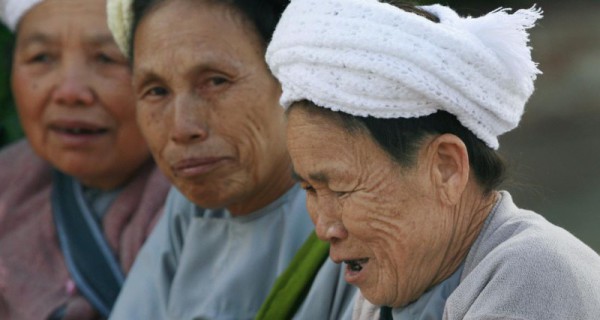A stroll during the working hours of a Chinese megacity like Beijing or Shanghai might lead one to believe you were taking a tour of a gargantuan retirement home. Whether it be greybeards playing mahjong in the park or hordes of elderly fussing over squalling children, the sensation is that China is overwhelmingly old. Over nine percent of China’s population is over the age of 65, and demographic trends appear to show that China’s ageing will only accelerate with time. By 2030, over 50 million Chinese are projected to be over the age of 80 – more than the total population of Canada. Other ‘Asian tigers’ of the region are facing the same problem, with population growth between the ages of 15-64 projected to turn negative as soon as next year. For Canada and the West, the implications that an old China has on the economy and security cannot be understated.
Stumbling giant
At a conference in 2012, demographer and National People’s Congress member Cai Fang voiced the fears of many in a single quote: “There’s now no doubt China will become old before it becomes rich.” China observer Timothy Beardson in his book, Stumbling Giant, stated that demographic issues combined with poor government policies would prevent China from attaining the coveted pole position in the global economy in this century. The problems that they point to – a shrinking labour force, an increase of required resources to devote to the elderly, and an increasingly low fertility rate – are repercussions of Maoist policy that must be dealt with head on.
The catalyst for the current demographic situation occurred half a century ago, shining proof that hasty policy decisions have unpredictable long-term consequences. Mao’s fervent belief that China would survive a nuclear war just by having an overwhelmingly large population led to the birth of the term ‘hero mothers’ who would save China by having five or six children. Faced with a looming population explosion, Mao’s successors implemented the one-child policy that still exists today. The combination of baby boomers growing old and the growth of the next generation being severely suppressed has led to the headache that China’s economists face today.

Fertility rates of the past 50 years
China’s economy is especially susceptible to ageing due to its dependence on low-cost labour to buoy its heady double-digit economic growth rate of the past decades. Expansion has already fallen to seven percent and will likely drop even more. Economists worry that China will run out of its increasingly shallow pool of cheap labour due to lower fertility rates and higher labour costs. According to the World Bank, Chinese women have a 1.7 fertility rate, lower than even more developed nations like the United States and much lower than the 2.5 of India. The work force has shrunk by roughly 30 million between 2011-2014 according to China’s National Bureau of Statistics to 918 million. However, productivity has gone up by three percent from 2013-2014, perhaps showing that even as fewer people enter the labour force, the enhanced education and health of those who do will make up for it.
Positive outlook
In line with the positive trend of productivity, China also plans to increase the statutory retirement age to keep hale older men in the labour force, which would bring an influx of 41 million men above the age of 60 to the labour force in 2020. Increased health care and a relaxation of business laws has allowed the elderly to work longer and possibly start second careers. Furthermore, with the trend of the elderly taking the responsibility of rearing grandchildren, many working-age women are freed to work full-time.
Also, though a 2010 report claimed that 23% of elderly Chinese were not able to take care of themselves, there have been numerous solutions put forth to fix the problem. Private companies have been building retirement homes with mixed success, and the government’s campaign for a renewal of filial piety, or xiao, has paid dividends. Though single children are ill equipped to take care of what is likely both their parents and even some grandparents, public welfare has made leaps and bounds in the past decade. In a press release with the Xinhua News Agency in 2014, the government promised standardized pension plans for both urban and rural areas, along with better health care for the elderly.
Geriatric peace
So what does an old China bode for Canada and NATO? The term geriatric peace has begun trending in popularity alongside the phenomenon of global ageing, and implies that countries full of old men and women will not be as enthused about going to war as a nation of hot-blooded young people. This theory has its share of pitfalls, Japan being a prime example. Already as old as China is projected to be in the coming decades, the geriatric peace theory would predict Japan to lessen its role in the East Asian region, but just the opposite is occurring. Though it is expected military and economic power will wane with an ageing population, such a shift in the social system has unpredictable consequences and may in fact lead to increasingly desperate moves to retain power and influence.
That the whole world is ageing is no secret. Only three percent of the world’s population live in a country with a growing fertility rate. It is in the best interests of Canadians and the rest of the world to keep an eye on China and see if it ages gracefully — and be prepared if it does not.




